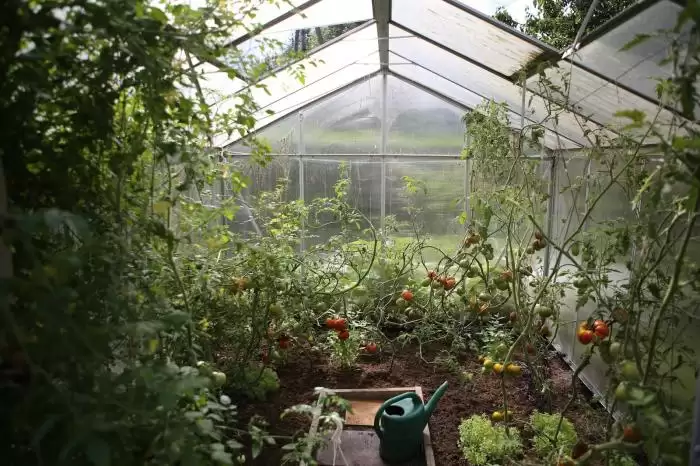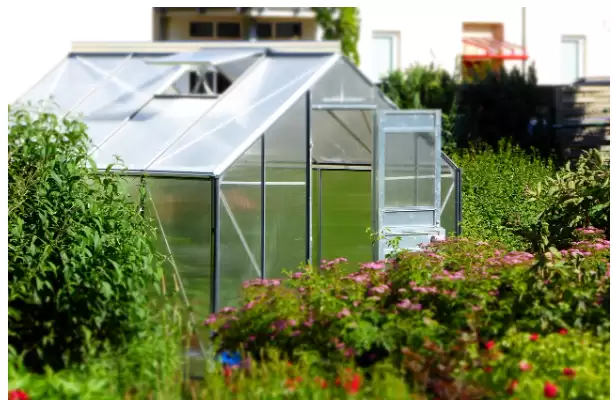In recent years, there has been a growing interest in organic vegetable and fruit production. Many people are turning to backyard gardening as a way to grow their own fresh, organic produce. One of the best ways to take your backyard gardening to the next level is by building a backyard greenhouse.
A greenhouse can help extend the growing season and provide a controlled environment for your plants. In this blog post, we will discuss the benefits of a backyard greenhouse for organic vegetable and fruit production, as well as some tips for building and maintaining one.
What is a Backyard Greenhouse?
A backyard greenhouse is a structure that allows you to control the growing environment for your plants. It provides protection from the elements, regulates temperature and humidity, and creates a microclimate that is ideal for growing plants. Greenhouses come in a variety of shapes and sizes, from small hobby greenhouses to large commercial structures.
Benefits of a Backyard Greenhouse
A backyard greenhouse offers many benefits for organic vegetable and fruit production. Here are just a few:
- Extended Growing Season: A greenhouse allows you to extend your growing season, giving you more time to grow your own fresh produce. With a greenhouse, you can start your seeds earlier in the season and continue growing later in the fall.
- Controlled Environment: A greenhouse provides a controlled environment for your plants. You can control the temperature, humidity, and light, which can help increase yields and improve the quality of your produce.
- Protection from Pests: A greenhouse provides protection from pests, such as insects and rodents, which can damage or destroy your plants.
- Improved Plant Health: A greenhouse can help improve the health of your plants by providing a more stable growing environment. With a controlled environment, you can minimize the risk of disease and other plant problems.
- Reduce your environmental impact: Growing your own organic produce in a greenhouse reduces the need for transportation and packaging, which can have a significant environmental impact.
Building a Backyard Greenhouse
Building a backyard greenhouse may seem daunting, but it can be a fun and rewarding project. Here are some tips for building a backyard greenhouse:
- Choose the Right Location: When choosing a location for your greenhouse, consider factors such as sun exposure, wind protection, and drainage. You want to choose a location that will provide enough sunlight for your plants and protect them from strong winds.
- Decide on the Type of Greenhouse: There are many different types of greenhouses, including hoop houses, cold frames, and traditional glass greenhouses. Consider your budget, space, and growing needs when choosing the type of greenhouse to build.
- Plan the Layout: Plan the layout of your greenhouse carefully, taking into account the size of your plants, the type of growing containers you will be using, and the amount of space you will need to move around inside the greenhouse.
- Choose the Right Materials: Choose materials that are durable and appropriate for your climate. For example, if you live in a windy area, you may need to choose materials that can withstand strong winds.
- Install Proper Ventilation: Proper ventilation is essential for a healthy greenhouse environment. Make sure to install vents or fans to allow for adequate air circulation.
Maintaining a Backyard Greenhouse
Maintaining a backyard greenhouse requires some effort, but the results are well worth it. Here are some tips for maintaining a backyard greenhouse:
- Watering: Water your plants regularly, taking care not to overwater or underwater. Use a watering can or hose with a gentle spray to avoid damaging your plants.
- Temperature Control: Monitor the temperature inside your greenhouse and make adjustments as needed. Use a thermometer to track the temperature, and consider using shade cloth or fans to help regulate the temperature.
- Pest Control: Keep an eye out for pests and take measures to control them if necessary. Use organic pest control methods, such as introducing beneficial insects or using natural repellents.
- Soil Management: Regularly test and amend your soil to ensure that it is healthy and fertile. Use organic fertilizers and compost to provide nutrients to your plants.
- Cleaning: Regularly clean your greenhouse to prevent the buildup of dirt and debris. This will help keep your plants healthy and prevent disease.

Growing Organic Vegetables and Fruits in Your Backyard Greenhouse
Now that your backyard greenhouse is set up and ready to go, it’s time to start growing your organic vegetables and fruits. Here are some tips to help you get started:
- Choose the right plants: When selecting plants for your greenhouse, choose varieties that are suited to your climate and the conditions inside the greenhouse. Some popular options for organic vegetable production include tomatoes, cucumbers, peppers, and leafy greens.
- Plan your planting schedule: To maximize the yield of your greenhouse, it’s important to plan your planting schedule carefully. Some plants may require more light or heat than others, so make sure to research the optimal planting times for each type of plant.
- Use organic pest control methods: While a greenhouse can protect plants from many pests and diseases, it’s still important to be vigilant and take preventive measures. Organic pest control methods include introducing beneficial insects, such as ladybugs and praying mantises, and using natural repellents, such as neem oil or garlic spray.
- Water and fertilize regularly: Organic vegetable and fruit production requires regular watering and fertilization. Make sure to water your plants thoroughly and regularly, and use organic fertilizers, such as compost tea or fish emulsion, to promote healthy growth.
Conclusion
A backyard greenhouse is a great way to grow your own organic fruits and vegetables, regardless of the size of your backyard or the climate in your area. With a little planning and preparation, you can enjoy a bountiful harvest of fresh, chemical-free produce all year round. So why not give it a try? Your taste buds (and your wallet) will be very pleased!
Authors bio
Lucas Green is a young digital marketing enthusiast from Phoenix, Arizona, US. Passionate about graphic design, social networking, content writing, and business in general. In his spare time, he writes extensively about graphic design, traveling, and business for SEO Thugs.








